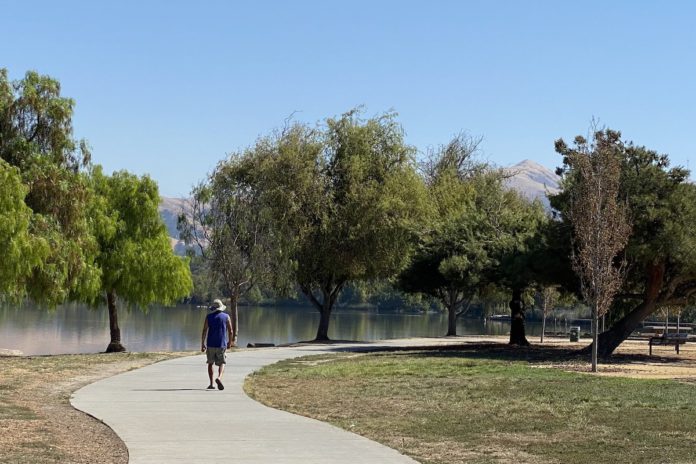The early October heat warning—with temperatures spiking up to 100F Wednesday, Thursday and Friday—prompts a quick reaction of “We’re seeing the effects of climate change in real time.” In one sense, this is taking the threat posed by extreme weather seriously. In another sense, this misses the bigger question: Climate change is here—how do people stay safe?
In the Tri-City Area, some libraries and community centers are designated as cooling centers—accessible air-conditioned locations where anyone can go to escape the heat. Homeless individuals and those who don’t have access to air conditioning can especially rely on these public spots to escape the more severe effects of heat. According to city websites, Fremont has six locations, Newark two and Union City four. Fremont’s centers are open on summer and fall days exceeding 91 degrees Fahrenheit, while the other cities don’t have a specific temperature threshold listed. Alameda County also has a comprehensive dashboard of cooling center hours and locations: veoci.com/v/p/dashboard/ewxv8granu.
In addition to the centers, the city websites also provide information on how to spot the signs of heat exhaustion and heat stroke, who is most vulnerable during extreme heat, and how to sign up for weather alerts. For more comprehensive weather information, the National Weather Service offers nationwide updates.
While the rest of October may not see such high temperatures, Bay Area residents should stay aware of seasonal risks—such as wildfires. Quarry Lakes and Dry Creek Regional Park in Union City, and Coyote Hills in Fremont, are all listed as “Very High Fire Danger” with Level 1 restrictions on the Park District website. While temperatures fluctuate based on global factors, wildfires can spark from human carelessness such as smoking in the parks or building campfires outside of designated safe areas. However, wildfires can have natural causes too, such as the SCU Lightning Complex fire in 2020, part of a series of fires caused by a storm. The risk of similar fires will continue to increase with hotter, drier summers, but not every year has to repeat 2020’s destruction. People can observe fire safety, and park district staff can work to clear away dry brush. (Recently, some goats helped out! (tricityvoice.com/focused-grazing-wildfire-solution/)
Although cold winter temperatures seem a fragile dreamlike memory from this scorching October, recent years have seen extreme winter storms as well. In December 2022 and January 2023, storms caused flooding around the Bay Area, even opening a sinkhole at Oakland Zoo. In Fremont, Lake Elizabeth sprouted several mini companion lakes —to the delight of local ducks, at least. And even as the Bay Area currently battles dry heat, across the country extreme flooding from Hurricane Helene has caused as-yet uncounted devastation in North Carolina.
It’s important to remember that climate change means not just higher temperatures, but extreme weather events of all kinds. In a few months, the cooling centers will become warming centers, serving an equally important purpose. While in one sense there is no preparing for the damage of natural disasters, researching local resources is a step anyone can do today. And with elections coming up, citizens can urge officials running for mayor and city council seats to prioritize the safety of community members.




